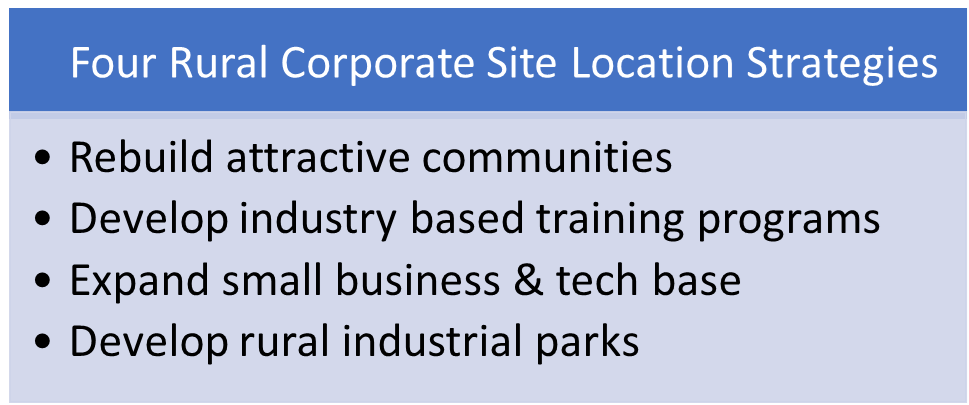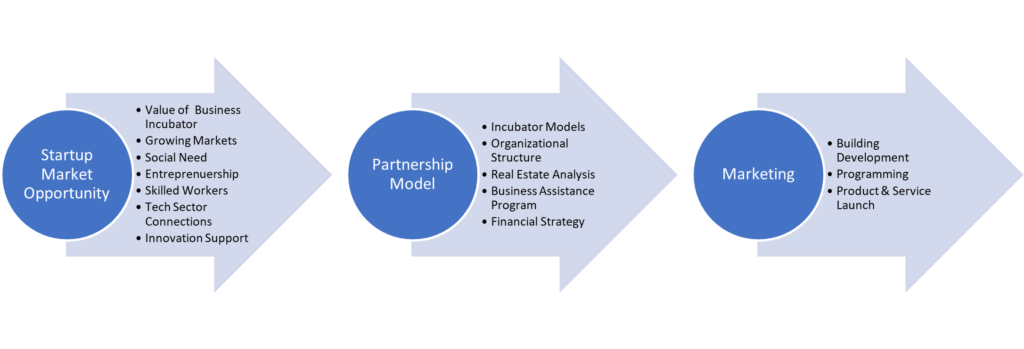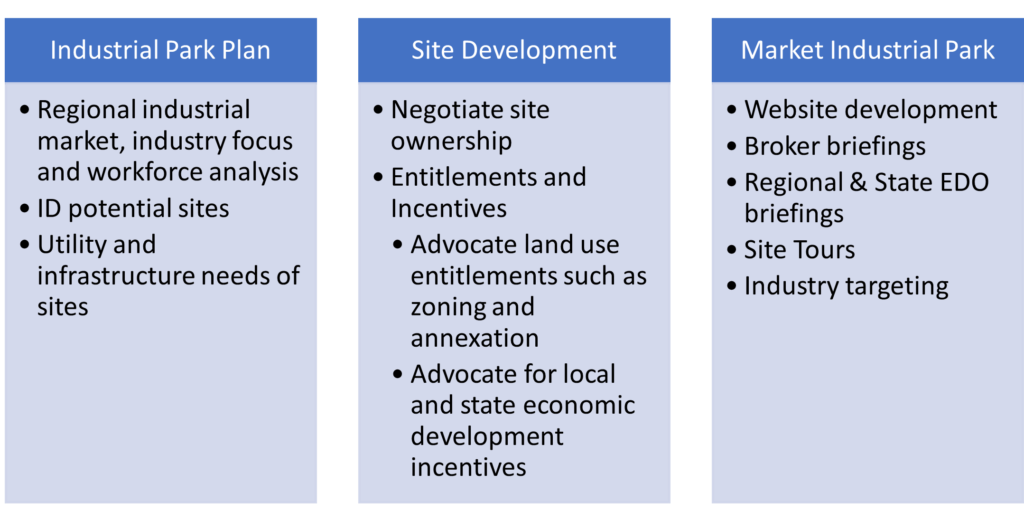Rural markets seeking high-wage job creation and capital investment should focus on four key strategies all with the underlying goal of ensuring the talent needed for their company is available in these otherwise attractive markets. The four strategies include building communities young talent wants to live, work, and play in; retaining and attracting tech and home-grown talent through industry partnerships; developing a stronger small business base while attracting technology centers, and capitalizing on traditional manufacturing and logistics industry strengths.

Transforming rural historic Downtowns to attract younger workers to live, work and play is a critical step to addressing the rural talent gap. Companies considering rural markets for a corporate site location project need to ensure the community is focused on transforming their rural Downtown. America’s younger generation is more concerned with where they live and what they can do than necessarily where they work. However, rural communities will not be attractive to a younger generation of workers unless they can address critical quality-of-life issues such as the availability of quality housing, the creation of mixed-use developments, and the development of quality, local retail, and entertainment districts. Redeveloping rural Downtowns is the place to start when looking to retain and attract younger workers. Redeveloping rural Downtowns can be accomplished through the creation of a Public-Private-Partnership (PPP) to incentivize retail, residential, and office investments. Redeveloping existing sites costs more than building on greenfield sites but the payoff for developers and the community can be substantial. Thus, states and the federal government offer a range of tools to support rural Downtown redevelopment that include Downtown Redevelopment Districts and historic preservation tax credits; entertainment districts designation, and state project financing.
Rural communities face a greater talent challenge as they often lack a small pool of available workers and, even worse, the workforce pipeline that begins with students in high school leaving town as soon as they graduate. Pickaway County, Ohio’s Pickaway Works Program provides a model for addressing the rural workforce development challenge. The mission of Pickaway Works is to collaborate with education, business, and community to build partnerships that create relevant career pathways for students and link them with resources and opportunities to succeed.[i] Their vision is to inspire and improve Pickaway County students’ college and career readiness which will improve their quality of life and ultimately improve the economic stability of the area. As part of the fastest-growing metropolitan region in the Midwest, Pickaway County is in the midst of significant change.[ii] The Columbus Region is experiencing historic economic growth with nearly 150,000 new jobs created in the last five years creating substantial economic opportunity for rural Pickaway County located just south of Columbus.[iii] To meet local job demand, the local school districts in Pickaway County have invested significant resources over the last several years in developing new career readiness initiatives intended to prepare and align students with local employment opportunities, entrepreneurial training, internships, 21st-century skills curriculum, and a variety of other tools are now being utilized to equip graduates for the workplace.[iv] To foster collaboration with Pickaway County employers and local education and workforce training resources, local economic development leaders began a series of Workforce Connection meetings.[v] These sessions led to the creation of a workforce solution known as Pickaway WORKS – World of Real Knowledge and Skills – launched in November 2017. Pickaway Works builds partnerships that create relevant career pathways and provide local career opportunities for students, meet workforce demands of local employers, and strengthen the economic stability of our community by connecting educators with employers, promoting internships for students, preparing students through mock interviews, implementing college readiness programs and other efforts focused on reconnecting education with business and community, to better engage with each other and support a more authentic learning experience for students.[vi] Rural communities’ key to long-term success is to diversify their economies through expansion in the technology sector. Technology-Based Economic Development strategies for rural regions address challenges and opportunities but focus on bringing technology work to rural communities, developing a rural STEM workforce, enhancing access to capital for rural companies, and supporting the creation of start-up companies in rural communities. Business incubators can be a prime tool for rural communities to spur tech-based company creation. Business incubators are defined as a business support process that accelerates the successful development of start-ups and fledging companies by providing entrepreneurs with an array of targeted resources and services.[vii] Well over 1,000 business incubators exist in the United States today and globally it is estimated there are 17,000 business incubators.[viii] The EDA is a prime source for business incubator funding, but they do require the completion of a business incubator feasibility study and participation in a regional Community Economic Development Strategy or CEDS prior to the award of public works funding to these requests. Business incubators address the high failure rate among small and medium-sized enterprises in the developing world estimated at 75% within three years. The completion of a regional Community Economic Development or CEDS strategy and a business incubator feasibility study is required before the U.S. Department of Commerce’s Economic Development Administration will award funding for a facility. A business incubator feasibility study should identify the incubator structure design for promoting the creation of new high-wage jobs through company creation with emerging technology and small businesses.
Montrose Group Incubator Feasibility Study Methodology

Finally, developing new industrial parks can be a critical tool for continued rural economic development. Rural communities since the rise of labor unions in urban centers have long been a popular location for manufacturing corporate site location projects. These facilities through global competition or automation of their workforce are not the economic force for rural America they were twenty years ago. That economic stimulus can be reborn again through global economic changes spurred by COVID-19 to bring back the domestic supply chain to U.S. shores to prevent current and future disruptions in key manufacturing, pharmaceutical, and other industries looking to re-shore facilities. A critical tool rural communities should consider is a very mature tool- creating a rural industrial park. The slowdown in private developer industrial parks created by high-interest rates creates an opening for rural communities to capture the anticipated industrial growth that is forecasted to continue. Rural communities should develop industrial parks through a three-step process: create an industrial park plan, prepare a site for industrial development, and market the site for that industrial investment.
Rural Industrial Park Development Strategy

Rural communities across the United States remain vital targets for corporate site location projects but those communities need a pro-active strategy to capitalize on this economic opportunity.
[i] https://pickawayworks.org/about-us/
[ii] Ibid.
[iii] Ibid.
[iv] Ibid.
[v] Ibid.
[vi] Ibid.
[vii] Ibid.
[viii] Ibid.